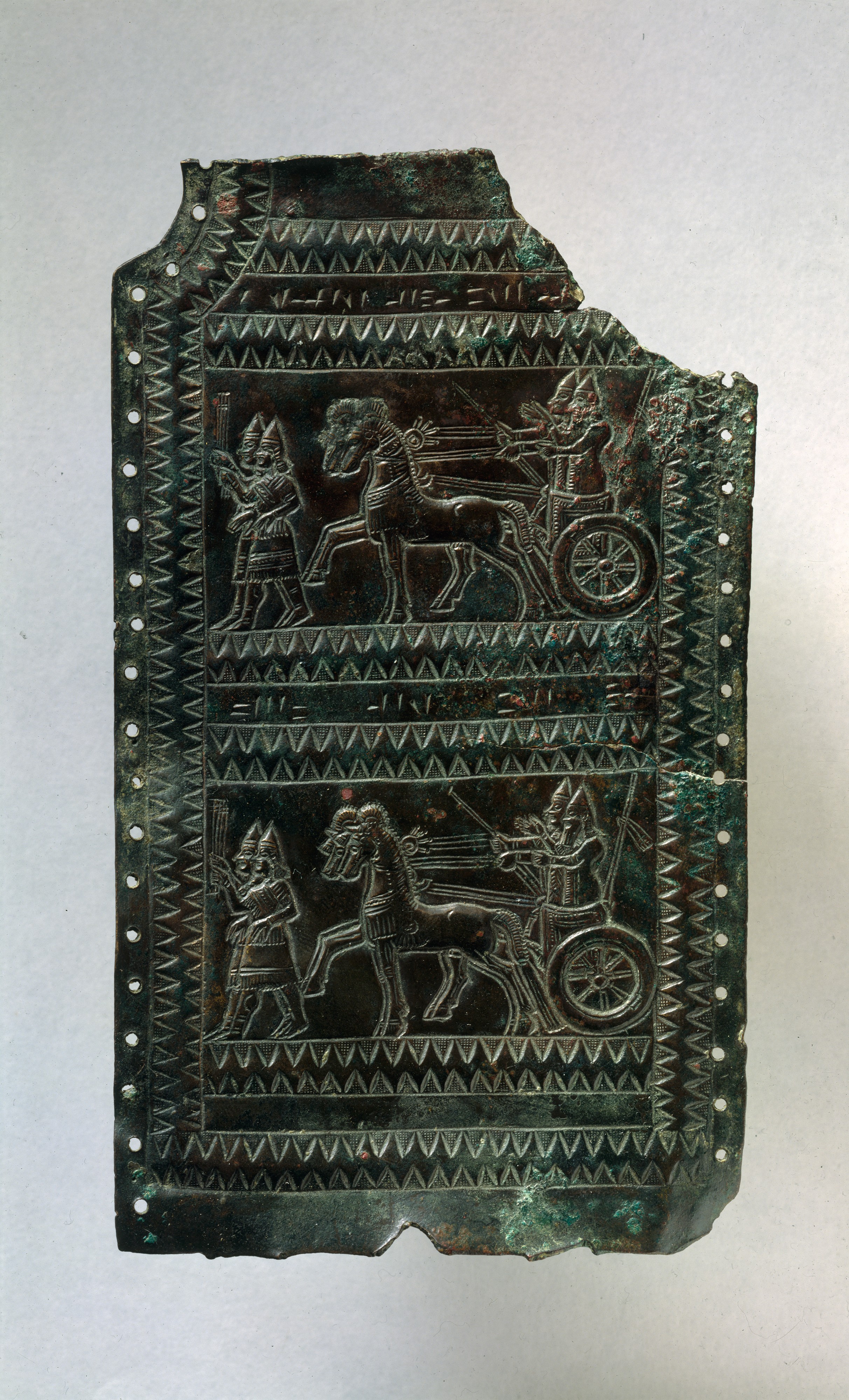Plaque fragment inscribed with the Urartian royal name Argishti
Metropolitan Museum of Art, New York


Plaque fragment inscribed with the Urartian royal name Argishti (probably Argishti II), 8th–7th century BC.
Eastern Anatolia or Northwestern Iran, Urartian
Bronze
2.72 x 6 in. (6.91 x 15.24 cm)
This fragment is decorated with two identical royal or religious processions, a typical stylistic and iconographic representation. What the footmen carry remains unknown. The Urartian cuneiform inscription above the top panel reads: "From the arsenal of Argishti." One Argishti is known to have reigned from ca. 785–765 B.C., the second from 714–ca. 685 B.C.
Heilbrunn Timeline of Art History. New York: The Metropolitan Museum of Art, 2000. 1976.5